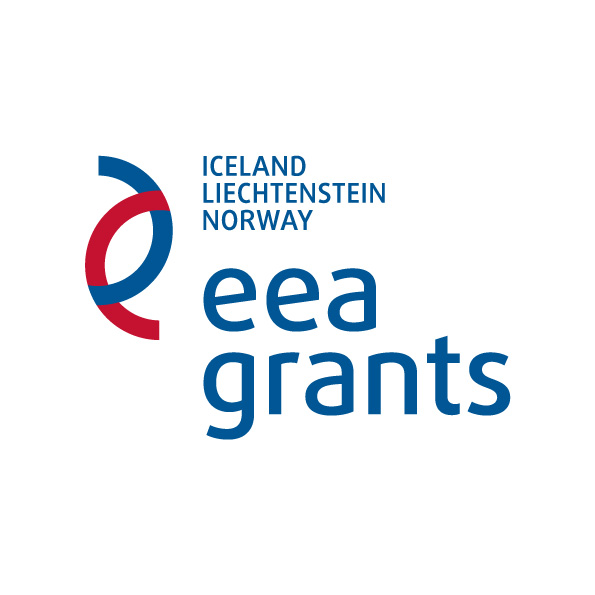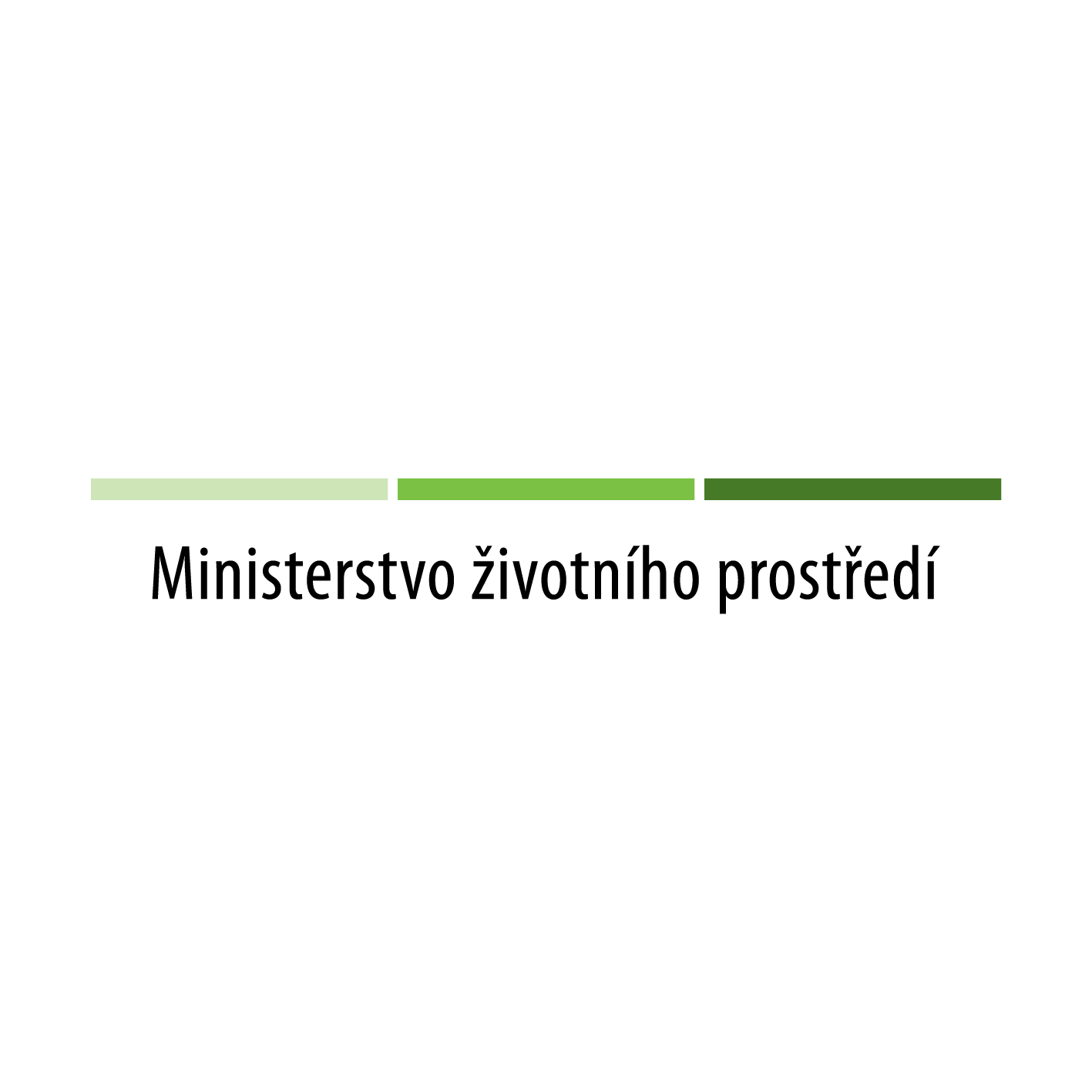Action plans for species recovery in case of species Brown Bog-rush (Schoenus ferrugineus), Black Bo
General aim of the project
The goal of the project is to gather all relevant informationfor decision making process in preparation of new Action plans for species recovery in case of species Brown Bog-rush (Schoenus ferrugineus), Black Bog-rush (Schoenus nigricans), False Asphodel (Tofieldia calyculata) and Orange Ragwort (Tephroseris aurantiaca).
Project MGSII-48 "elaboration of documentation for decision on ZPZCHD for the species: Brown Bog-rush (Schoenus ferrugineus), Black Bog-rush (Schoenus nigricans), False Asphodel (Tofieldia calyculata) and Orange Ragwort (Tephroseris aurantiaca)" was conducted from February 2015 until September 2016.
Species
Bog-rush (Schoenus)
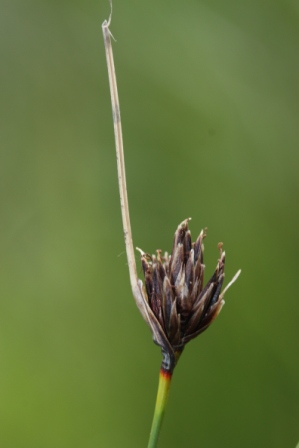 Knowledge prior to project
Knowledge prior to project
There are 2 species of Bog-rush in the Czech Republic: (Sch. ferrugineus) and (Sch. nigricans), and also their hybrid (Sch. x intermedius).
Schoenus ferrugineus was published as occurring on 3 sites on fens near Elbe River. The weakest population is near Všetaty, but it is the only one without recorded hybridization. The largest population with large stands consisting of thousands of plants is known on Hrabanovská černava. In the past however, there were records of Schoenus nigricans and hybrids might be also presented. The most complicated situation is known from Polabská černava near Mělnická Vrutice where both species plus their hybrid are. Altogether several hundred plants are difficult for correct determination. It seems that Schoenus ferrugineus is prevailing species whereas Schoenus nigricans is rare and threatened by hybridization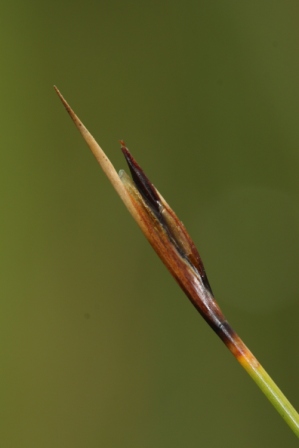 .
.
Schoenus nigricans is along with Polabská černava known from one more site with a few plants – Cikánský dolík.
Solution
Analysis of all populations of both species will be undertaken with emphasis on rarer Schoenus nigricans where all tussocks will be counted.
Groundwater level fluctuation will be monitored by means of installed tubes with long term measuring system on sites Polabská černava and Hrabanovská černava. Vegetation sampling of all sites will be done but more detailed on Polabská černava with mixture of both species.
However the most important part of research is genetic study of hybridization, what its extent is and if hybrids identified morphologically fit to genetic results.
Results
We recognized that many of formerly stated facts about both species are actually different.
Site Cikánský dolík is place with 32 plants on three different sites and species has occupied all suitable microhabitats. Health of the population is good and tussocks of different sizes are good hint of good vitality of population.
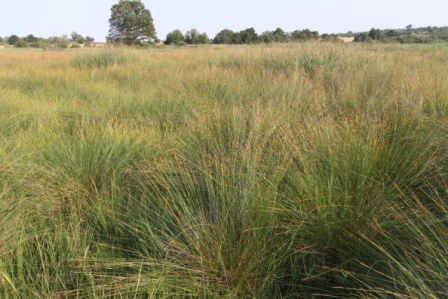 Site Všetatská černava is the only pure population without any hybrid and altogether slightly above 100 plants were recorded.
Site Všetatská černava is the only pure population without any hybrid and altogether slightly above 100 plants were recorded.
Sites Mělnická Vrutice i Hrabanovská černava consist mostly of hybrids, genetic analyses do not prove occurrence of Schoenus ferrugineus on both sites and Schoenus nigicans on the latter one. Pure Schoenus nigricans plants were detected on Mělnická Vrutice.
Our research proved high importance of Všetatská černava site with pure population of Schoenus ferrugineus and in fact it looks that it is the more threatened species of the two.
Vegetation study proved that Schoenus nigricans occupies more wet habitats than Schoenus ferrugineus and hybrid.
False Asphodel (Tofieldia calyculata)
Knowledge prior to project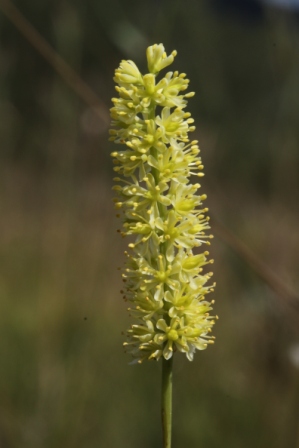
False Asphodel is known from one site in Dokesko region (Baronský rybník), two from Džbán region (Cikánský dolík near Bílichov and V bahnách near Třtice), one site near Loučeň (rybník Olšina) and one in southern Bohemia (Kralovické louky). The only strong population hosting more than one hundred individuals is Baronský rybník. There are just a few individuals at each of the remaining localities. It is worth to point out, that it is quite difficult to find non flowering plants in dense vegetation.
Solution
All individuals on all sites will be recorded along with their spatial distribution. Historical sites will be also visited with effort to find False Asphodel there.
The main effort is to find reasons causing strong decline of the species in the Czech Republic. Detail analysis of both abiotic and biotic characteristic of sites with False Asphodel and those where it became extinct might bring light to our understanding of reasons of decline. This will have implementation into management of sites with False Asphodel.
Observations of species reproduction and ratio of vegetative and generative reproduction will be also undertaken.
Results
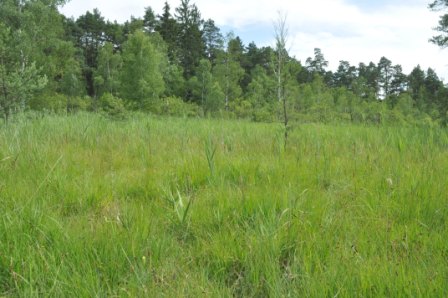 Baronský rybník population is by far the strongest in the Czech Republic, consisting of ca 130 individuals. All the remaining populations are weak, none of them exceeding ten plants on one site, but usually even much less. Flase Asphodel was not proved on any of the historic sites and even worse it was not proved on site near Tetčiněves with last record in 2007. Weak populations consist mostly of a few bigger assemblages of rosettes and sites with their occurrence are densely vegetated without open patches. Main recommendation for future management is to make regular and relatively strong disturbances near the plants to allow possible growth of seedlings. Dry year 2015 was very limiting flowering and fruiting of False Asphodel on all sites but the largest one which seems to be without any negative influence. In both years the ratio of fruiting to flowering plants was roughly 0,66.
Baronský rybník population is by far the strongest in the Czech Republic, consisting of ca 130 individuals. All the remaining populations are weak, none of them exceeding ten plants on one site, but usually even much less. Flase Asphodel was not proved on any of the historic sites and even worse it was not proved on site near Tetčiněves with last record in 2007. Weak populations consist mostly of a few bigger assemblages of rosettes and sites with their occurrence are densely vegetated without open patches. Main recommendation for future management is to make regular and relatively strong disturbances near the plants to allow possible growth of seedlings. Dry year 2015 was very limiting flowering and fruiting of False Asphodel on all sites but the largest one which seems to be without any negative influence. In both years the ratio of fruiting to flowering plants was roughly 0,66.
Orange Ragwort (Tephroseris aurantiaca)
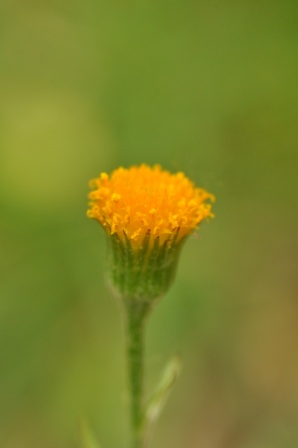 Knowledge prior to project
Knowledge prior to project
We had the information about the only one remaining population of the species with roughly 17 plants in the beginning of the project. The site is near Peruc – Nature Monument V hlubokém.
Solution
Investigate the range of the population and extent of generative reproduction and its limits.
Results
Only 5 flowering plants were recorded in year 2015, all of them on one small site. Some of the plants were damaged by grazing. Two plants only were capable to produce mature seeds. During fall and winter we were receiving more information about some more places where the species was on the location V hlubokém observed. Even more important was information presented by Dr. Roleček, that some Moravian populations of Tephroseris integrifolia are in fact rather Tephroseris aurantiaca according to genetic studies made by his team. Since both species are very sensitive on all different negative impacts in forest they are good candidates for Recovery Action Plan.
More detailed mapping of the species on site v Hlubokém revealed 3 sites where the species can be observed. 42 leaf rosettes were detected but none plant flowered. 26 leaf rosettes were labeled in the field by means of small metal labels placed on the surface of the soil and anchored under surface.
Generative reproduction on the site is very rare, almost zero in some seasons. However judging by number of plants it is quite likely that plants are capable to grow from seeds on the site.
Amount of game on site is very critical, mostly because of grazing. Therefore one of our recommendations is to build at least one fencing to protect plants.
"This project is funded with support from the EEA Fund 2009-2014 and Ministry of the environment. For the content of this document is solely responsible Sagittaria-Association for nature conservation of Central Moravia and it cannot in any way be regarded as opinion donora or Ministry of the environment. "
